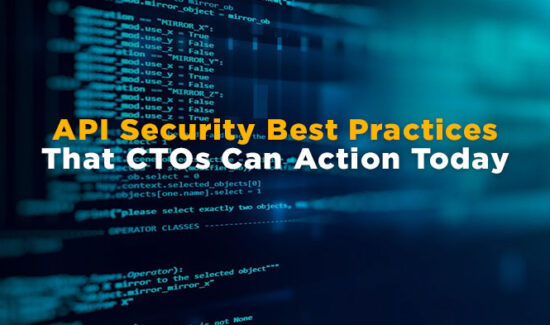How to Properly Invest Your Cybersecurity Budget


According to technology research giant Gartner, Inc. enterprise spending on Information Security (InfoSec) technology and solutions will reach $114 billion globally this year. This represents an astounding 12.4% increase from last year, and analysts predict an increase of almost 9% in spending next year.
Of course, spending more on InfoSec technology is always preferable to the alternative—an alternative that is the reality for many enterprises to this day. However, cybersecurity funding is only as relevant as it is sensibly invested. Much like any other problem, just pouring money into cybersecurity blindly won’t magically solve your digital safety issues. You need to understand the best way to invest your cybersecurity budget in order to most optimally secure your IT perimeter and improve your threat detection capabilities.
Here are our top tips for how to properly invest your cybersecurity budget:
Invest in Visibility
If you are looking to invest your cybersecurity budget in the most optimal way, your first step shouldn’t necessarily be in fortifying everything in your network with the same level of security. While this may be a tempting prospect—to seal everything in your enterprise’s network behind a digital wall of iron—this can actually cause more obstacles long-term.
After all, securing everything to the same degree means it can be difficult if not impossible to distinguish which security alerts or potential threats are high priority problems and which may be of lesser importance. Essentially, you would stretch your cybersecurity too widely and too thin; focusing on everything at once means actually focusing on nothing all the time.
Instead, you should invest your cybersecurity budget to improve your visibility and thereby find the parts of your network needing the most protection. Visibility truly is an underappreciated aspect of InfoSec. With the proliferation of mobile devices connecting to enterprise networks with the advent of BYOD culture, the continual creation of new databases, and the growth of the Internet of Things (IoT), whole digital assets might go missing from your detection capabilities. Security holes might be left open and unquestioned.
Visibility isn’t an abstract goal. It is essential to understanding the full extent of what your network constitutes, what high-value databases it contains, and where you need to enforce the strongest levels of surveillance. Make sure your cybersecurity budget reflects those priorities.
Invest in Upgrading
Does your enterprise still use a legacy solution for its security analytics, SIEM, or endpoint security? It’s time to stop that.
Enterprises will often get stuck in a common logic loop: “Our current cybersecurity solution has worked in the past. Therefore it should be fine now.” It’s a frustratingly simple trap to fall into, and an understandable one. However, it is a trap.
If you plan to invest your cybersecurity budget properly, you need to seriously examine your legacy cybersecurity solution. Is it still holding up to modern threats such as fileless malware, social engineering, or erroneous login attempts? Can it be updated? Is it still being supported by the solution provider, or has it been left by the wayside?
Purchasing new technology with your cybersecurity budget without critically examining your own current cybersecurity platform is a recipe for disaster. Legacy solutions may create integration issues with other solutions, leading to optimization failures and possible security holes. If severely outdated, legacy solutions might become their own security holes.
Look to answer the critical questions about your legacy solution, and see if it is time for an upgrade or a replacement. In order to facilitate these questions, examine your enterprise—its industry, its size, and the digital threats it is likely to face as a result. Make sure you have the right solution to protect your enterprise specifically. Otherwise, it may be time to invest your cybersecurity budget in finding a solution that does fit.
Invest in Detection
Studies show enterprise decision-makers still believe investing in their IT perimeter and in preventative measures is the right course of action. Many still believe malware is the ultimate threat to their enterprise’s security as it was in the earliest days of cybersecurity.
That isn’t to say malware isn’t a threat. However, it isn’t the threat it once was, and the enterprise IT perimeter is far more porous than it once was. The cybersecurity paradigm is changing appropriately from a prevention model to a detection model. When you begin to invest your cybersecurity budget, ensure your investment follows this new model. Invest in threat intelligence, security alerts, security event correlation, and investigative tools.
The results may surprise you. And unlike so many other surprises in cybersecurity, this will be a pleasant surprise.
Other Resources:
5 Tips for Setting Up a Security Operations Center (SOC)
Get Your Employees to Embrace SIEM Best Practices!
4 Tips to Make Data Breach Detection Easier For Your Enterprise
Enterprises: Don’t Become Complacent in Your Cybersecurity!
How to Make Your SIEM Solution Deployment Easier for Your Enterprise
Comparing the Top SIEM Vendors — Solutions Review
How UEBA Can Prevent Insider Threats in your Enterprise
SIEM vs Security Analytics: What’s the Difference?
Should Risk Analytics Bridge the Cybersecurity Talent Gap?
What’s Changed? The Gartner 2017 Security Information and Event Management (SIEM) Magic Quadrant
The 25 Best Security Analytics and SIEM Platforms for 2018
Widget not in any sidebars
























